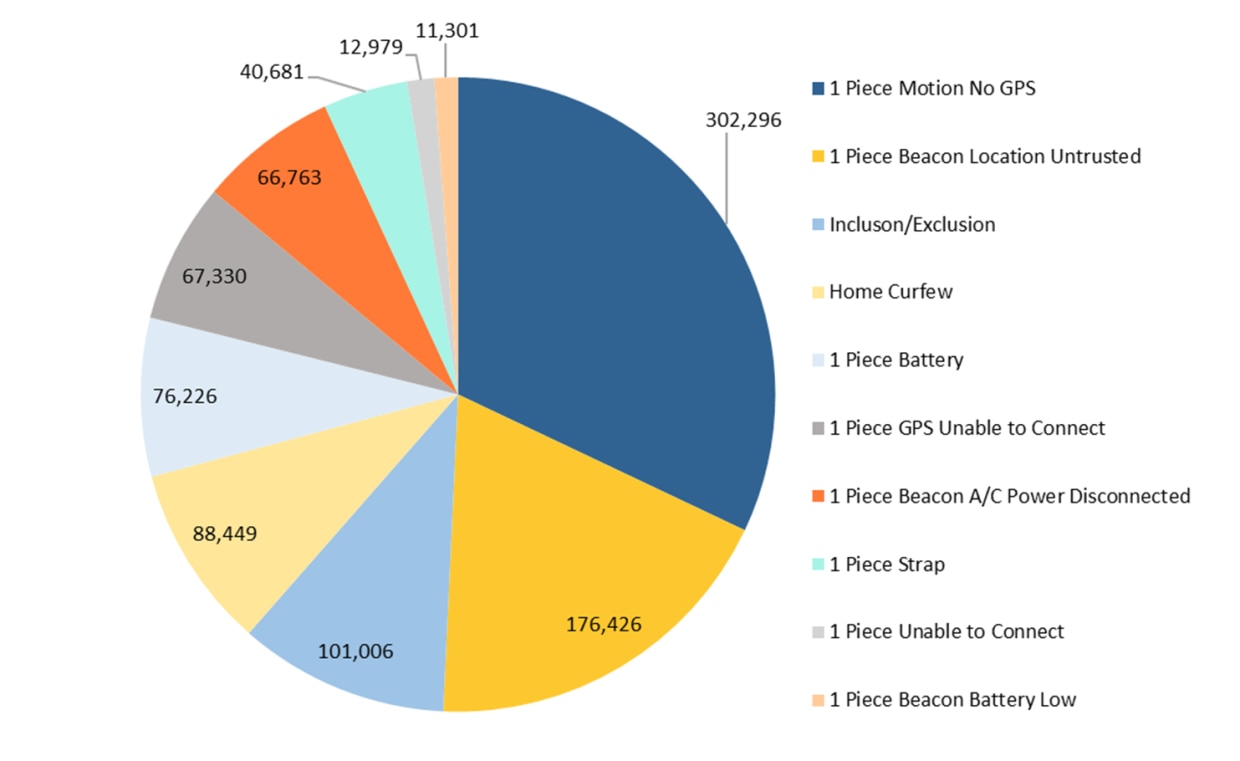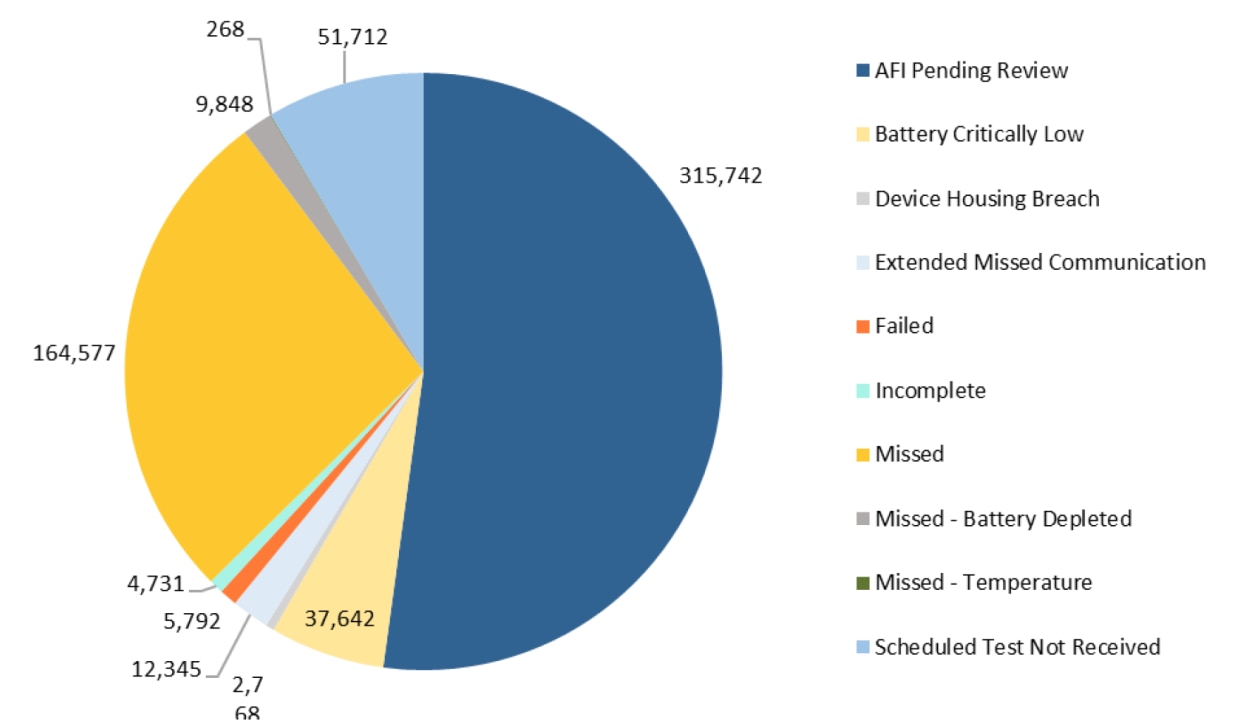Overview
The Office of the Commissioner of Probation (OCP) is part of the Massachusetts Trial Court system. The system is overseen by the Chief Justice of the Trial Court and the Court Administrator, who report to the Chief Justice of the Supreme Judicial Court. According to the Massachusetts Probation Service’s (MPS’s) website,
The Commissioner of Probation, Edward J. Dolan, and his office oversee the Massachusetts Probation Service and the Office of the Community Corrections, which includes 105 probation departments and 18 community corrections centers, the Electronic Monitoring Center, and the Trial Court Community Service Program. Probation officers working in adult criminal courts (Superior Court, Boston Municipal Court, and District Court) supervise pre-trial and post-disposition cases.
The Commissioner administers MPS in conjunction with the Chief Justice of the Trial Court and the Court Administrator, who make final decisions on a number of matters. According to its website,
The Massachusetts Probation Service’s mission is to increase community safety, reduce recidivism, contribute to the fair and equitable administration of justice, support victims and survivors, and assist individuals and families in achieving long term positive change.
OCP is located at 1 Ashburton Place in Boston. As of June 30, 2020, the office had 1,778 employees. Its operating budget was $156,133,131 for fiscal year 2019 and $163,055,581 for fiscal year 2020.
According to MPS’s website,
The Massachusetts Probation Service’s Electronic Monitoring (ELMO) Program was first established in April 2001 as an alternative to incarceration and to provide structure, control, and accountability for probationers who were sentenced to house arrest by a judge.
In addition to supervision of probationers, the program includes supervision of parolees and litigants. The program’s core functions include enrolling program participants, handling program alerts, and responding to phone calls. Electronic Monitoring (ELMO) Program employees also call courts to gather information, resolve problems, and follow up on warrants. The primary tools the ELMO Program uses to monitor participants are global positioning system (GPS) devices—specifically, electronic bracelets that provide participants’ locations via GPS—and Secure Continuous Remote Alcohol Monitoring (SCRAM) remote breath devices, which provide participants’ real-time breath alcohol test results and locations via GPS.
The ELMO Center, home of ELMO Program operations, is in Clinton, and its daily operations are managed by a statewide manager from OCP. The center is open 24 hours a day all year. During our audit period, the ELMO Program monitored 19,960 probationers, parolees, and litigants: 14,073 with GPS devices only, 4,803 with SCRAM devices only, and 1,084 with both GPS and SCRAM devices.
The ELMO Center is staffed by a team of 64 MPS employees who collaborate with probation officers throughout the state to monitor participants. According to the ELMO Center’s website,
GPS devices are used to enforce court-mandated curfews and court orders, including house arrest. The remote breath alcohol monitoring device is used to monitor people who are court-ordered to not drink alcohol.
The ELMO Program uses two external software systems to manage enrollment and monitoring. The software system used for managing GPS monitoring of participants is called Attenti Event Monitor (EM) Manager. This system is owned by the Attenti Group, a company with operations in over 30 countries. The company’s United States headquarters is in Odessa, Florida. The software system used for managing SCRAM participants is called SCRAMNET. This software is owned by SCRAM Systems, which also operates in a number of other countries and has its global headquarters in Littleton, Colorado.
ELMO Program Enrollment Process
For each new participant with a GPS or SCRAM device, a probation officer or parole officer, or an officer’s designee, must complete an enrollment packet. The probation officer or parole officer assigned to the new participant emails the enrollment packet information to the ELMO Center. An ELMO Center employee electronically tags the email to indicate that the employee is working on the enrollment; prints the enrollment packet; places the packet in a folder; and attaches a label indicating whether the packet is for a participant with a GPS device, a SCRAM device, or both. The packet is placed with those of other enrollments that occurred that day; an overnight team reviews the packets for accuracy. Each GPS enrollment packet includes court-ordered parameters1 in the following documents: (1) an Enrollment Form; (2) a Weekly Itinerary Form; (3) a Zone Form, if the participant is subject to a court-ordered exclusion or inclusion zone (i.e., an area the participant is not allowed to enter or leave); (4) a Victim Information Form, if there is a victim; and (5) a signed Order of GPS Supervision Conditions Form. A sixth form, the Pre-Trial Conditions of Release Form, is not required for new enrollments but is kept on file if received. Each SCRAM enrollment packet includes (1) an Enrollment Form; (2) an Alcohol Monitoring Device Weekly Itinerary Form; and (3) a Victim Information Form, if applicable. A Pre-Trial Conditions of Release Form is not required for new enrollments but is kept on file if received. The ELMO Center employee enters the information from enrollment packets in Attenti EM Manager for participants with GPS devices and SCRAMNET for participants with SCRAM devices. This employee then contacts the probation officer who is responsible for supervising each participant to activate the monitoring equipment. A participant is considered enrolled once the monitoring equipment is activated.
According to OCP management, during our audit period the ELMO Center began a transition to a new paperless case filing system using MassCourts.2 The goal of transitioning to the new system was to streamline operations, reduce redundancy, and increase efficiency in enforcing court orders. For this new system, once a court orders an individual to use a GPS and/or SCRAM device, a probation officer, or an officer’s designee, enters information about the individual in MassCourts. This information may include special conditions, inclusion and/or exclusion zones, and curfews. The probation officer completes an enrollment packet in MassCourts, as well as an Order of GPS Supervision Conditions Form if the individual will be monitored with a GPS device, and emails the ELMO Center a notification that a new enrollment has been uploaded. An ELMO Center employee then accesses the enrollment packet in MassCourts and processes the new participant’s enrollment. After the enrollment is processed, the ELMO Center employee emails the probation officer to indicate that the monitoring equipment is ready to be activated.
ELMO Program Alert Process
GPS Monitoring
GPS device malfunctions, tampering with or removal of GPS devices, and violations of exclusion and/or inclusion zones and curfews cause GPS alerts. The ELMO Center receives approximately 2,300 alerts a day. Alerts are categorized as Tier 1, Tier 2, or Tier 3. (See Appendix A for a description of alerts by tier.) Tier 1 alerts are the most serious and Tier 3 the least. Tier 1 and Tier 2 alerts can involve deliberate tampering with or removal of equipment, as well as violation of exclusion and/or inclusion zones and curfews. Tier 3 alerts are more technical and generally involve other variables, including low battery, lack of GPS coverage, or power disconnection.
If an alert occurs during court hours, an ELMO Center employee attempts to contact the participant to determine what caused it and/or sends a notification to the participant’s device. The ELMO Center employee investigates information provided by the participant, reviews the participant’s itinerary and any special circumstances (e.g., releases for medical treatment or court appearances), and checks for any other pertinent notes. If there is no documentation of special circumstances, the ELMO Center employee contacts the participant’s probation officer to discuss the alert and what response is appropriate. If the employee cannot contact the probation officer, the employee contacts the assistant chief probation officer or chief probation officer in any court where the participant is being supervised. ELMO Center employees must record all actions in Attenti EM Manager or SCRAMNET case notes.
If an alert occurs after court hours, ELMO Center employees follow the initial steps outlined above to resolve it. If these steps do not resolve the alert, an ELMO Center employee informs an ELMO supervisor/manager and, if directed to do so, the ELMO Center’s Warrant Management Unit (WMU).3 WMU is provided with all information available for the case, including Court Activity Record Information,4 charges, any history of failing to respond to summonses or complaints within the required timeframe, all communications with the participant, and the participant’s history of alerts. If a WMU employee cannot resolve the alert, s/he issues a warrant, and an ELMO Center employee fills out the warrant and a Warrant Information Form, notifies the police, and emails the warrant and form to the probation officer and chief probation officer in any court where the participant is being supervised. If there is a Victim Notification Form in the participant’s folder that indicates that a victim wants to be notified after hours, the victim must be notified of the warrant. Additionally, if there is a victim, the ELMO Center employee copies an OCP victim services coordinator on the email with the warrant. On the next business day, if the warrant has not been resolved, WMU contacts the probation officer, assistant chief probation officer, and chief probation officer in any court where the participant is being supervised to see what additional steps need to be taken to resolve the alert and warrant. During the audit period, 958,384 GPS alerts were received. The top 10 alert types were as follows.
Top 10 GPS Alerts
SCRAM Monitoring
Causes of SCRAM alerts include scheduled breath alcohol tests being missed; test results not being received within 90 minutes after a scheduled test; tests being failed (i.e., showing a breath alcohol concentration level above the acceptable threshold); and Automated Facial Intelligence (AFI) pending review alerts (which occur when the breath test for a participant is passed, but the photograph of the person tested does not match the initial enrollment photograph of the participant in SCRAM Systems’ AFI software, or when a circumvention of the breath test is identified).
SCRAM alerts are generally handled in the order in which they are received. There are different categories of alerts, and each has its own response protocol. (See Appendix B for SCRAM alert categories.) For example, when a missed-test alert is received, an ELMO Center employee calls the participant to determine why the test was missed. The ELMO Center employee may request that the participant take an on-demand test. Tests can be missed for various reasons, such as the SCRAM device malfunctioning or the participant not having charged the battery. If an alert is not resolved during office hours, an ELMO Center employee contacts the participant’s probation officer to explain the situation. When an alert is generated after business hours, an ELMO Center employee follows a protocol similar to the protocol for handling after-hours GPS alerts. In both protocols, an ELMO supervisor/manager (and possibly WMU) is notified. As with GPS alerts, if the alert has not been resolved after initial protocol is followed, a warrant is issued and sent to the relevant authorities with jurisdiction over the participant’s case.
There were 605,425 SCRAM alerts during the audit period, as shown below.
Total SCRAM Alerts
| Date published: | November 8, 2021 |
|---|

